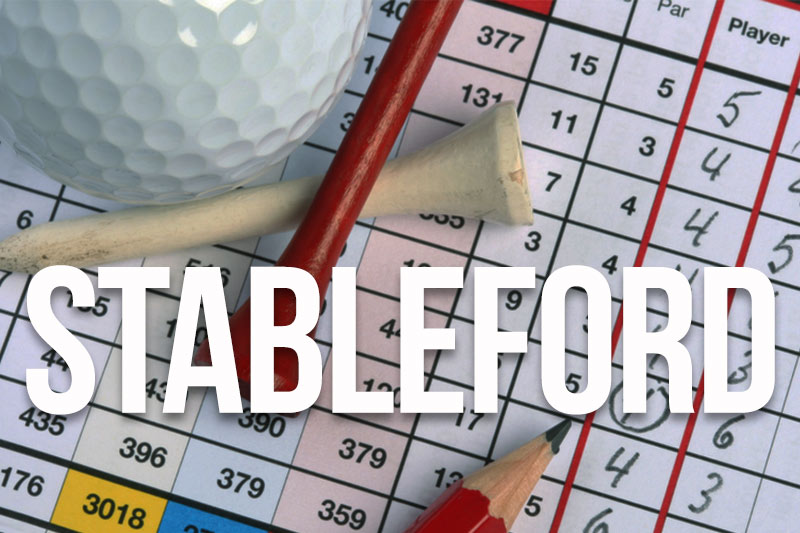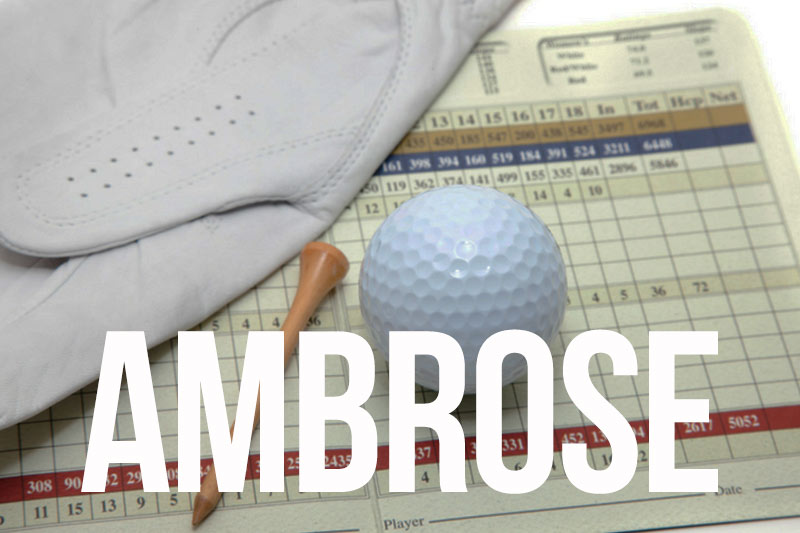Beginners Guide to Golf: Golf Formats
Posted by GolfBox on 26th Sep 2018
The game is coming along nicely, confidence is growing and you're ready to play golf for real under competition conditions.
Before you tee it up, here's a guide to the most popular competition formats in Australia.
STROKE
How it works: As the original scoring format, Stroke is about as straightforward as it gets in golf – just count all your strokes until you pick your ball out of the hole.
Strokes are tallied for a gross score, then the handicap is subtracted for a net score; the lowest net score wins. There’s usually a gross winner also.

Before you start: Remember to hit a provisional if there is any doubt about finding your ball. Swap scorecards with your playing partner - you'll be marking their card, and vice versa.
Scorecard: Write down strokes taken per hole, the total gross score and net score.
The good: Golf purists love it because it is a true test of a golfer’s consistency. Tends to suit lower handicap golfers who avoid serious trouble.
The bad: One blowout hole can do all the damage and the pace of play can be slow.
The ugly: Chewing through all your handicap strokes in the first two or three holes.
STABLEFORD
How it works: The most common scoring format in Australia, Stableford awards points based on your net score for each hole; the player with the most points is declared the winner.
One point is earned for a net bogey, two points for a net par, three points for a net birdie, four points for a net eagle and so on. And if you've had too many strokes to score any points (i.e. a net double bogey) there's no need to hole out - just pick your ball up. A score of 36 points means you've played to your handicap.

Before you start: Refer to the handicap index on the scorecard and note the holes your handicap shots are assigned to. For example, a player with a handicap of 10 will receive an extra shot on the 10 hardest holes (index 1-10), an 18 handicapper will receive an extra shot on each hole, while a player off a handicap of 25 will receive two extra shots on the seven hardest holes (index 1-7), and one extra shot on the other holes.
Scorecard: Both the strokes and points need to be recorded. For example, if a golfer is allocated a shot on a par 4 and records a 5 (a net par) they would write a 5 in the strokes column followed by a 2 in the score column. Or if they are allocated two shots on a par 5 and had an 8 (a net bogey), they would write 8 in the strokes column and 1 in the score column. Write a ‘-‘ in both columns if no points are scored.
The good: Lower pressure, quicker to play than stroke and two or three really bad holes won’t ruin your score. Suits high handicappers.
The bad: Lower handicappers can’t compete when a high handicapper shoots the lights out with a score in the mid-40s. Stableford also won’t sharpen up your consistency and concentration like stroke will.
The ugly: Bandits who bag five-pointers on par 3s.
PAR
How it works: Par scoring is basically like playing Matchplay against the course, with every hole producing a result of either a plus, half or minus - ‘+’ for a net score under par, ‘0’ for net score of par, and ‘-‘ for a net score over par.
The player that finishes the most number of shots ‘up’ or, if it‘s a particularly brutal day, the least number of shots ‘down’ is the winner.

Before you start: Like Stableford, check which holes your handicap shots are allocated to.
Scorecard: Record the strokes and result in the appropriate columns. For example, if a golfer is allocated a shot on a par 4 and records a 5 (net par) they would write a 5 in the strokes column and a ‘0’ in the result column. Or if a golfer is allocated two shots on a par 5 and scores a 6 (net birdie), they would write 6 in the strokes column and ‘+’ in the result column. A net bogey is recorded as a ‘-‘ in both columns.
At the end of the round, the pluses, minuses and zeroes are reconciled (a plus cancels out a minus, zeroes are ignored), and the final score is recorded as a number of shots ‘up’ (more pluses), ‘down’ (more minuses), or ‘square’ (equal).
For example if your final score is 2up (+2), you’ve played two shots better than your handicap. A score of 2down (-2) represents a score of two shots worse than your handicap. A score of square (0) means you’ve played to your handicap.
The good: Simple scoring once you understand it, pace of play is quick with balls being picked up after anything more than a net bogey.
The bad: A net eagle is treated the same as a net birdie (both ‘+’), so aggressive play isn’t rewarded.
The ugly: When you have to explain why your 7down result wouldn't have been so bad had you been playing Stableford.
AMBROSE
How it works: A favourite of corporate golf days, Ambrose (Europe, Australia) or Scramble (US) is an extremely social format played by either two, three or four player teams. Each player in the team tees off, after which the designated captain selects the best drive and marks the best ball’s position using a tee. All players then pick up their balls and fire their next shots from there, placing their ball within a club-length of the marker if it’s on the fairway, or dropping to within a club-length if it’s in the rough. The captain again chooses the best shot and this process continues until the ball is holed. The best ball score is recorded for the hole and the lowest total net score wins.

Before you start: Nominate a team captain, who will have the final say on which ball to play, and a team member to mark the scorecard. Check whether a 'minimum drives' rule applies, as Ambrose/Scramble competitions often require a team to select at least two or three drives from every team member.
Scorecard: Ambrose/Scramble is scored in stroke. A team handicap is calculated by adding the team members’ individual handicaps together then dividing it by four for a two-player team, six for a three-player team and eight for a four-player team. The team handicap is then subtracted from the gross score for the team’s net score. Note on the scorecard when a player’s drive is selected, to meet the 'minimum drives' rule if applicable.
The good: Relaxed competition golf which is ideal for beginners. Working as a team engages all golfers in the competition, regardless of skill level, and minimal time is wasted looking for lost balls.
The bad: Pace of play can sometimes slow down and teams with two or three low handicap golfers usually score extremely well.
The ugly: When your team's best option involves chipping out sideways from under a bush.

